Cocky apple
Planchonia careya, Fam. Lecythidaceae
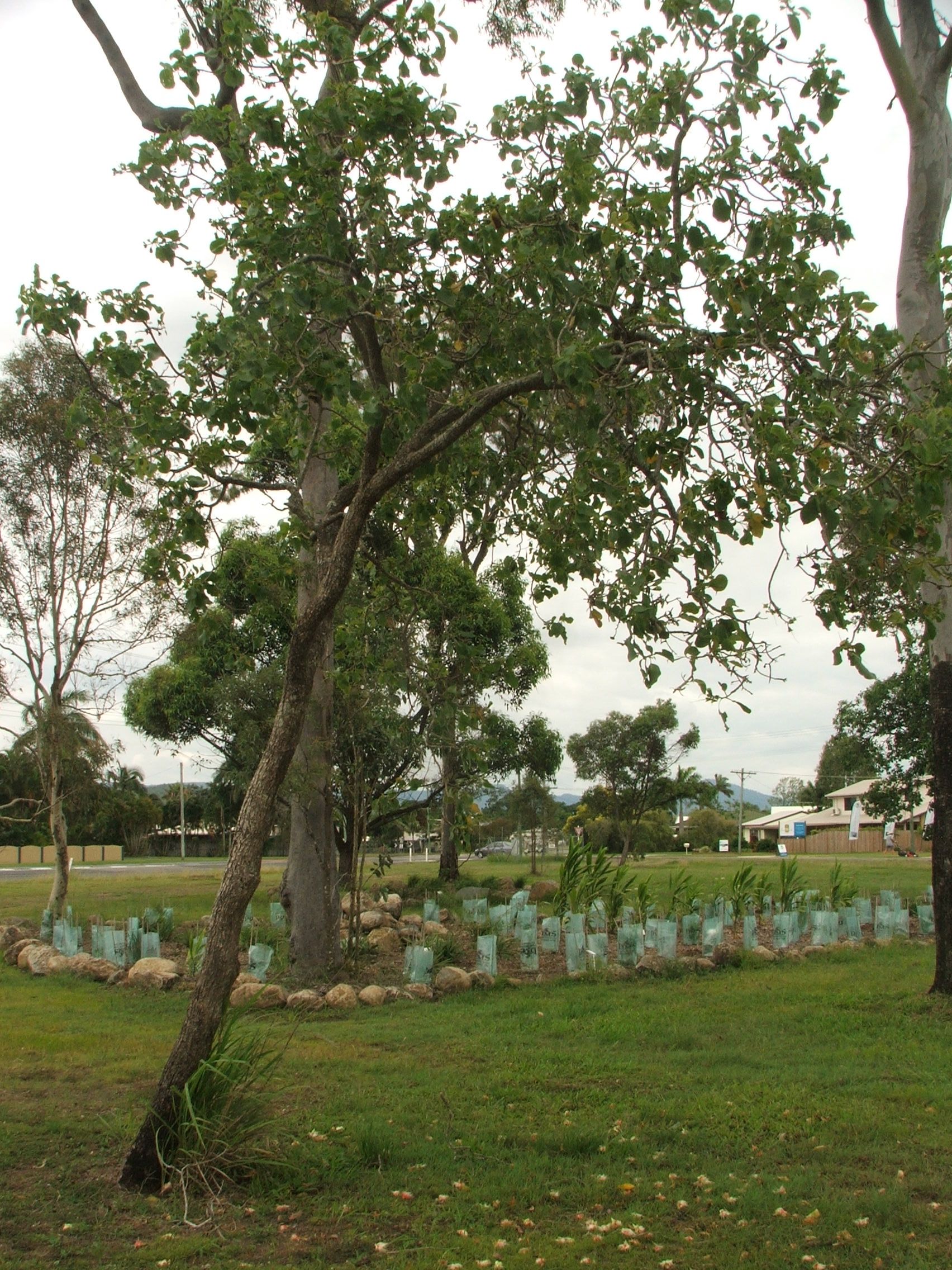
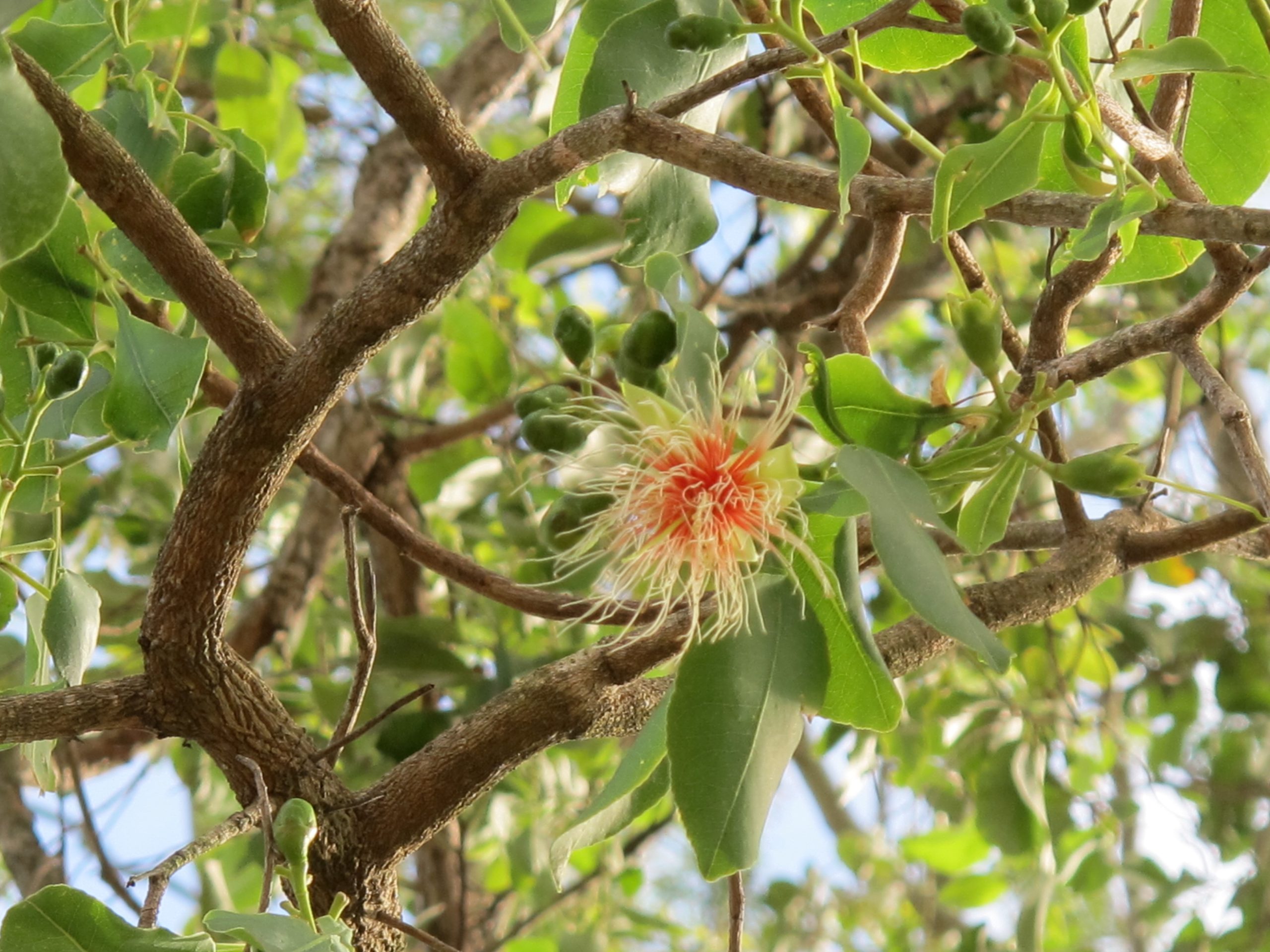
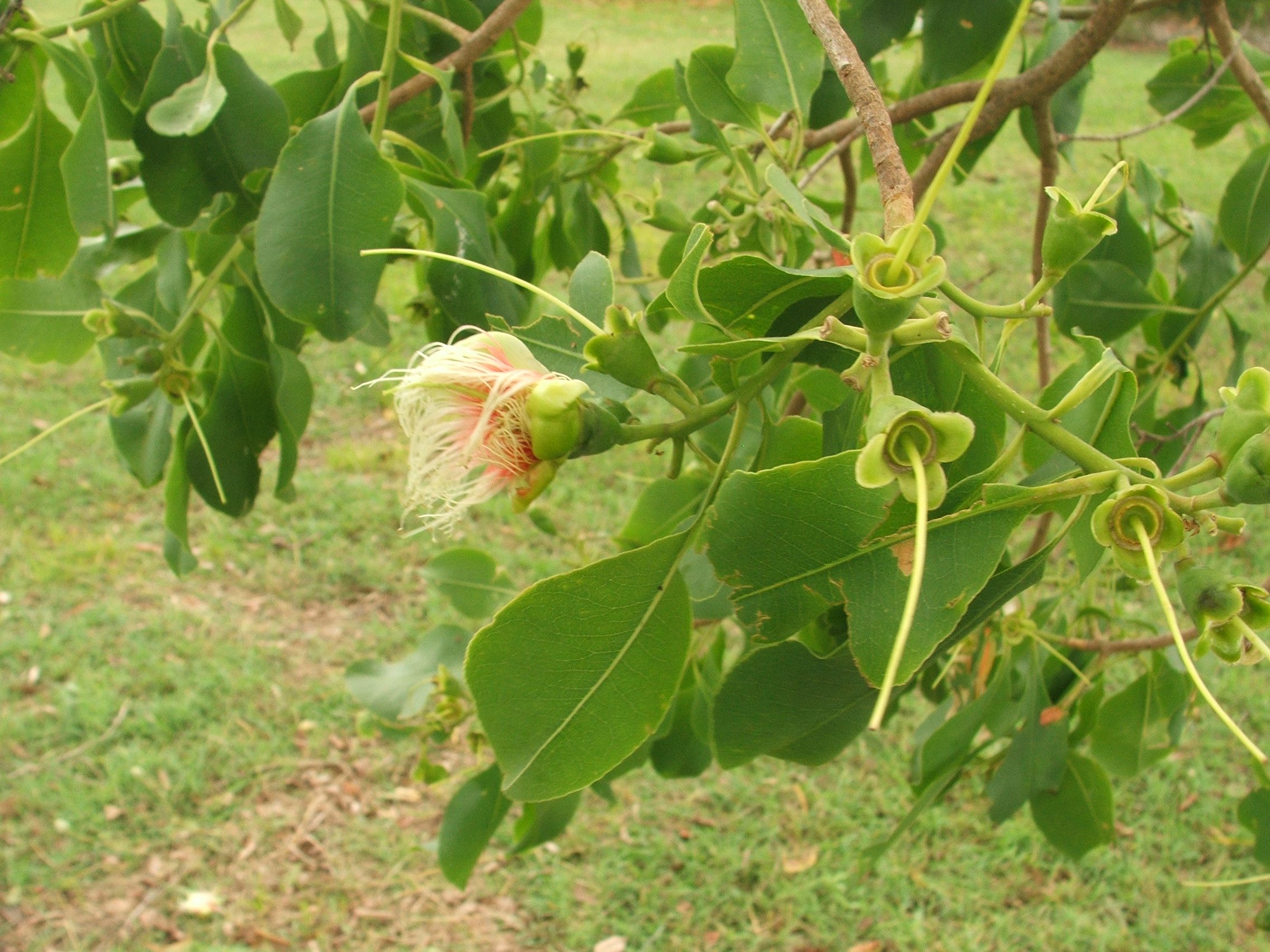
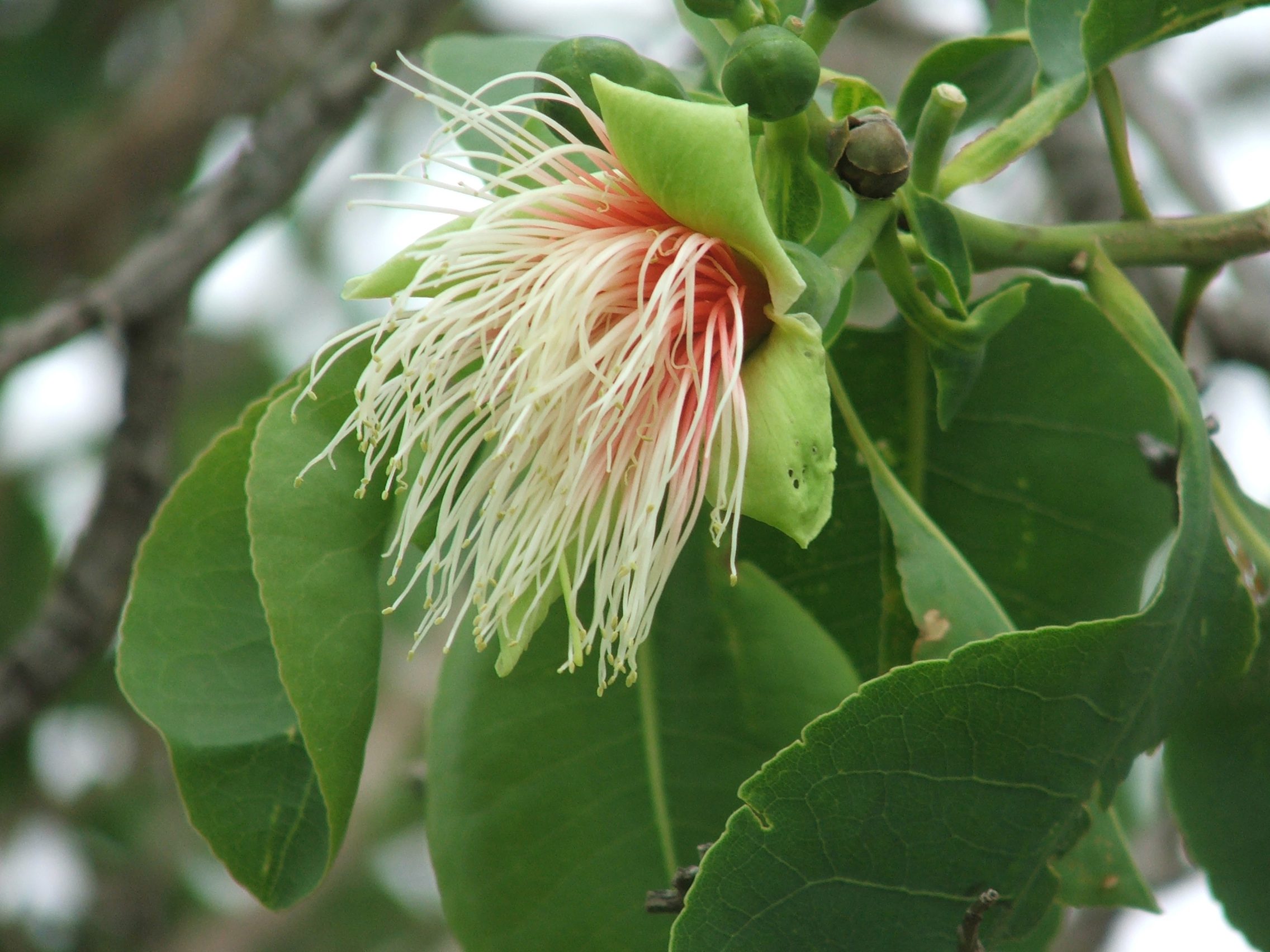
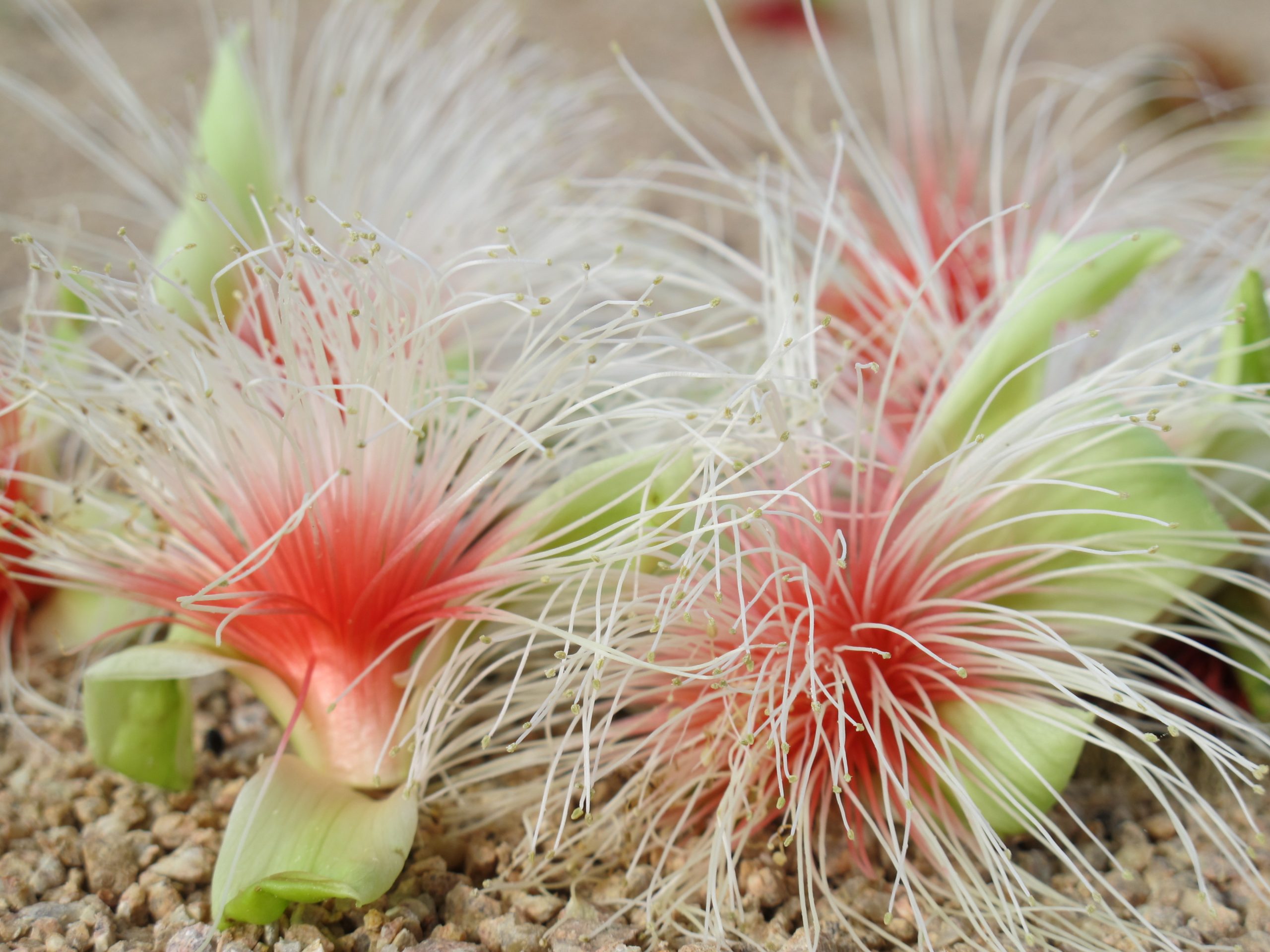
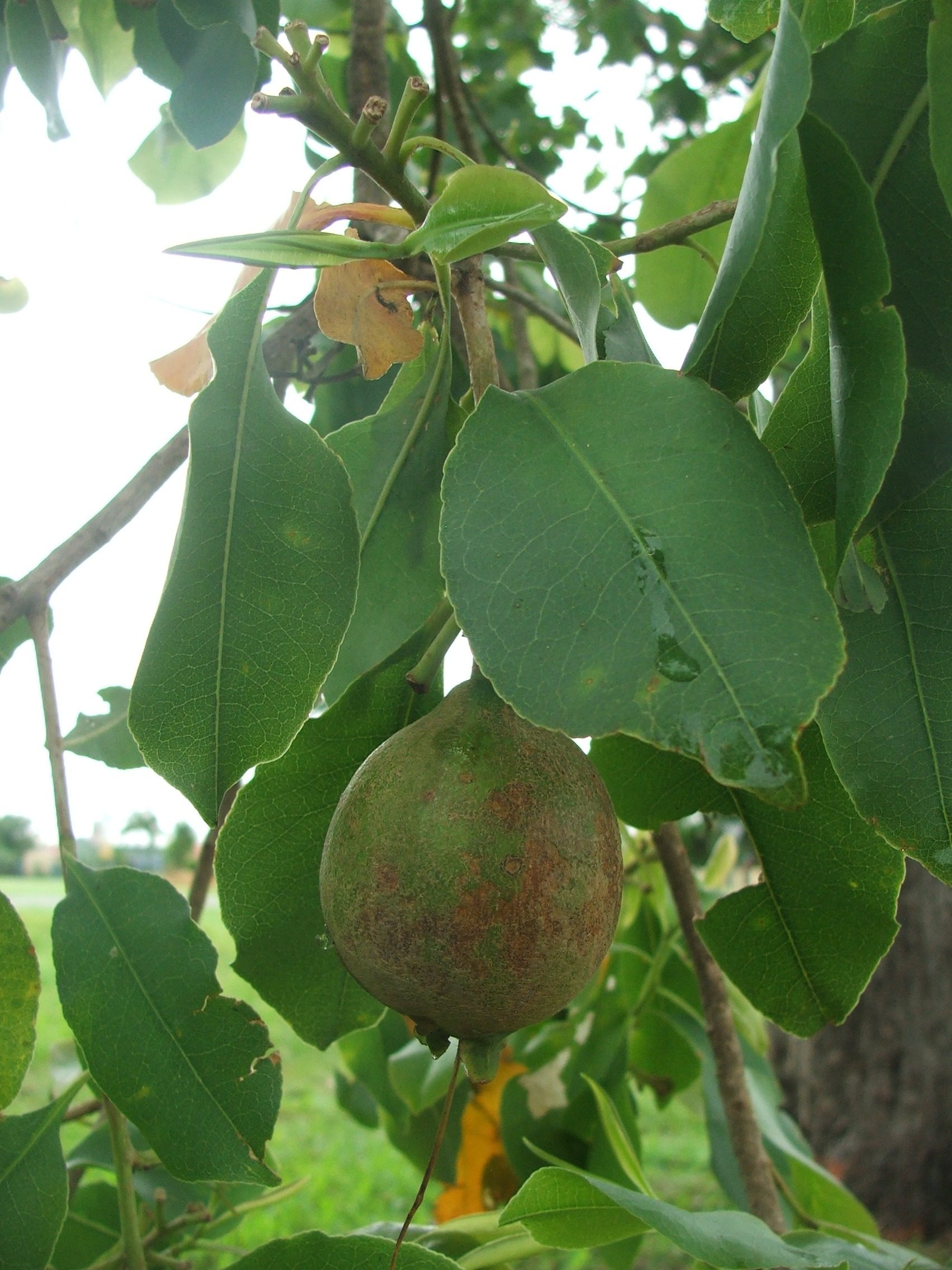






Small, somewhat crooked tree to approximately 6m with a pale, corky, fissured bark and an open canopy of broad leaves. The leaves turn to autumn colours during the dry season, making the trees conspicuous in the understorey.
| Weed Category: | |
| Weed: | No |
| Form or habit: | Small tree |
| Family: | Lecythidaceae |
| Leaf: | Simple, alternate, entire or with small rounded teeth, ovate to obovate, 3-14 x 2-7cm, hairless, pale green, winged petioles up to approximately 5cm long. |
| Flower conspicuous: | Conspicuous |
| Flower colour: |
White, Pink |
| Flower description: | Terminal racemes of flowers with white petals and numerous long stamens that are united into a pinkish tube at the base. Flowers open at dusk and fall to the ground by morning. Musky perfume. September to November. |
| Fruit conspicuous: | Conspicuous |
| Fruit colour: |
Green |
| Fruit: | |
| Fruit description: | Green fleshy-fibrous, ovoid about 4cm long, with a persistent calyx 'crown'. Seeds are horseshoe shaped. December to January. |
| Habitat: | Coastal dune, open forest, woodland. |
| Distribution | Queensland, Northern Territory, Western Australia, New Guinea. |
| Food source for: | Fruit eaten by the red tailed black and palm cockatoos and larvae of the yellow peach moth (Conogethes punctiferalis). Nectar eaten by rainbow and varied lorikeets, silver crowned and little friarbirds, blue faced, black chinned, white gaped, white throated, brown, dusky and red headed honeyeaters and yellow throated miner. Larval food plant for the ornate dusk flat, amethyst jewel, copper jewel, fiery jewel and black spotted flash butterflies and of the moths Theretra oldenlandiae (vine hawk moth) and Opodiphthera saccopoea (an emperor moth). It is a favourite tree of the green whizzer cicada (Macrotristria intersecta). |
| Toxicity: | No toxicity known |
| Origin: | Australia, New Guinea. |
| Notes: | It will resprout after fire. Will grow in most soils providing they are well drained. Needs plenty of light. Hardy in hot, dry conditions and will grow in cooler, moist areas. Propagate from cuttings or fresh seed. Fruit were eaten raw or roasted by some Aboriginal communities. The flesh is somewhat stringy and has a quince like taste but it must be ripe and yellowish, not white, or it may irritate the mouth. The bark and roots were pounded and used to poison saltwater and freshwater fish. A strong fibre from the bark was used to make nets and belts and 'bark' from the roots was used to make ceremonial belts and tassels. An infusion of the tannin rich inner bark has been used as a wash to heal wounds, boils, burns, leprosy sores and general sickness. Bark was also applied as a hot poultice for sores and wounds. In some areas, an infusion from the small roots was applied to prickly heat and chickenpox. Pulped leaves and stems were used to treat sores and ulcers. Heated leaves were used to treat wounds, stone fish stings and headaches. |
| Information sources: | Melzer R. & Plumb J. (2007) Plants of Capricornia. |